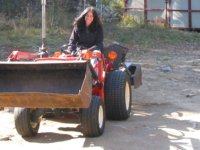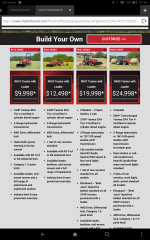Teachu2
Platinum Member
I read through a couple threads where people had issues, nothing that sounded like a horror story to me though...perhaps I didn't read the ones you're talking about.
You missed the one that slaughtered the lambs? The one that drank all the beer? The one that was stalking it's owner? The one that wasn't green it was <gasp> BLOOD RED?
I didn't buy a Mahindra because the dealer was a trailer dealer with no service or parts department. I didn't even look at LS for similar issues - they looked like they could take their vinyl banner off the fence and be gone in an hour or less. Some of the Mahindras are built by Mitsubishi, some by TYM, some by Mahindra, some by combinations of components. Educate yourself on what you are actually buying, and make an informed decision. If I had a real dealer to work with, I'd have favored the Mitsubishi-built units over the TYM, and those over the Mahindra, based on my perceptions of quality of fit and finish. I am biased, without a doubt, with my perceptions of the countries of origin affecting my perceptions of the products.
I bought a Kioti because it met my expectations, both the tractor and the dealership. Had the same dealer had LS, Yanmar, Kubota, Deere, Branson, TYM, or any other brand, I would have given them a thorough review and bought one that met my expectations. The only dealer/tractor combinations that met my expectations were the Kioti and Kubota dealers, and the Kioti was a little more tractor for quite a bit less money. Had the Kioti dealership not been a long-time locally owned and operated family tractor dealership, or the tractor not measured up, I'd own a Kubota today. Even Kioti's competition locally said very good things about both the product and the dealer - that's a powerful testimony.
For those folks who don't have local dealers, or prefer to turn their own wrenches, availability of parts without waiting on a container ship is a concern. Messick's and Michigan Iron both have excellent reputations here on TBN. Is there a similar dealer for Mahindra? I don't know - but I'd want to know before I bought one. YMMV.

